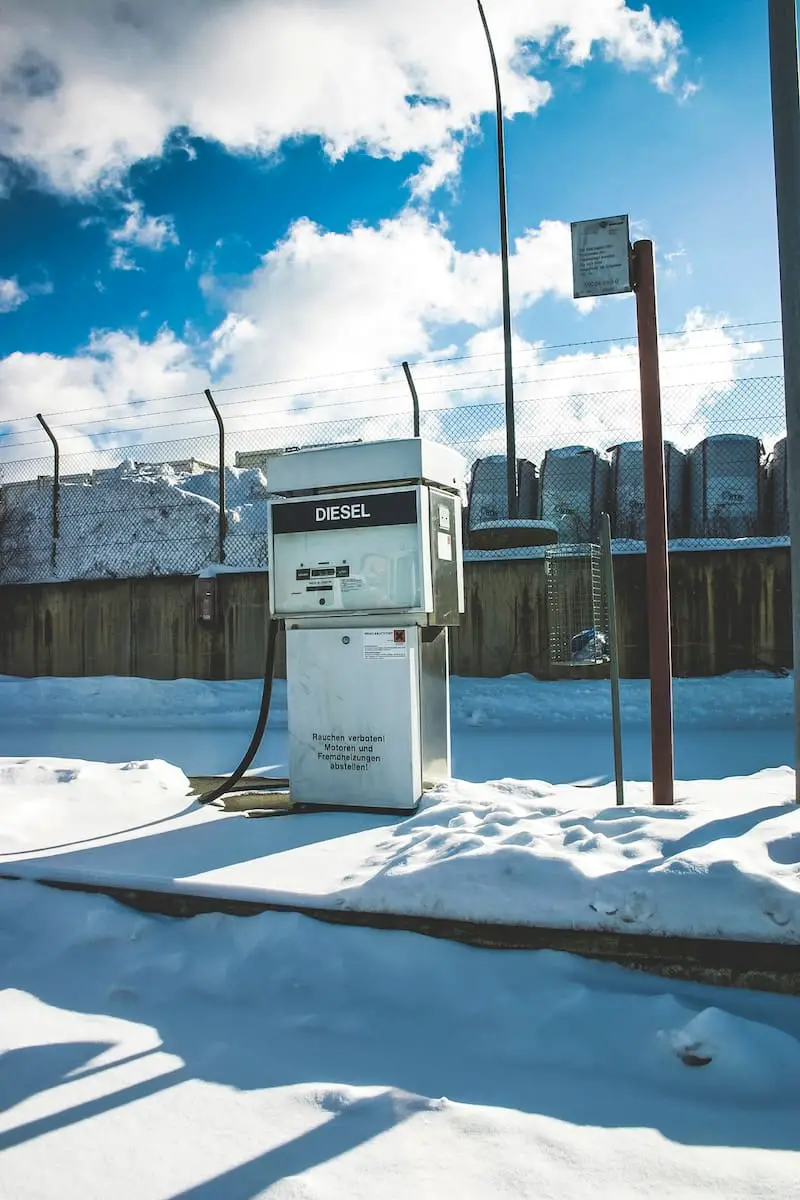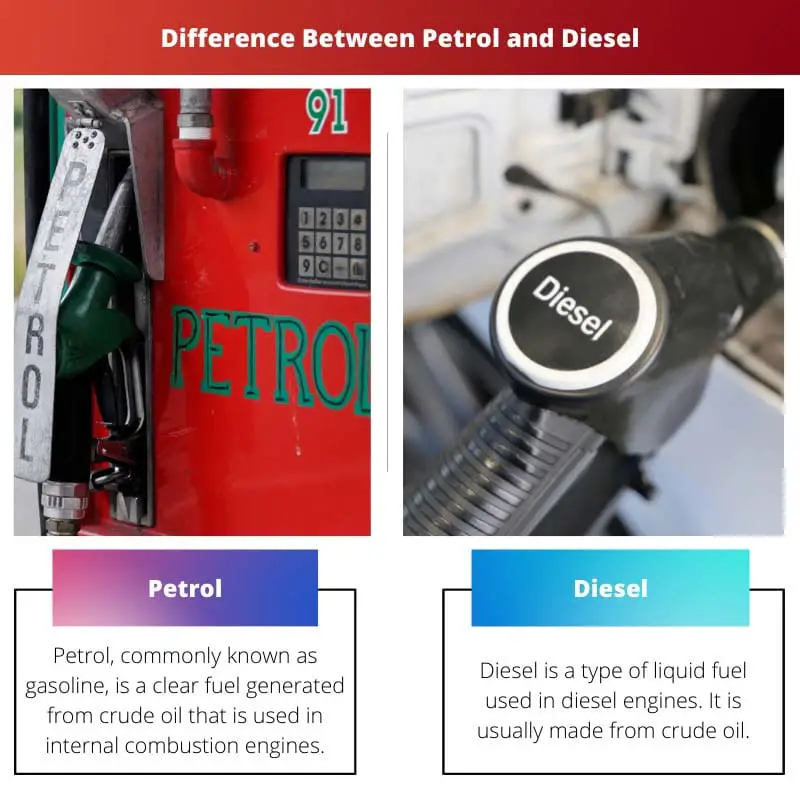The importance of obtaining and processing petroleum is not only in the production of petroleum products used as engine fuels, lubricants, or heating fuels, but also in chemical oil processing, where different low molecular weight products are produced, such as methane, ethylene, and other similar products, which serve as starting materials for the synthesis of various basic chemicals as well as final products.
Key Takeaways
- Petrol engines utilize spark ignition, while diesel engines use compression ignition.
- Diesel fuel has a higher energy density than petrol, offering greater fuel efficiency.
- Diesel engines produce more torque at lower RPMs, making them suitable for heavy-duty vehicles.
Petrol vs Diesel
Petrol is a fuel that is primarily used in spark-ignition engines, such as those found in vehicles and small aircraft. It is a lighter fuel than diesel. Diesel is a heavier fuel that is primarily used in compression-ignition engines, such as those found in trucks, buses, and heavy machinery.

Petrol, commonly known as gasoline, is a clear fuel generated from crude oil that is used in internal combustion engines. Petrol is manufactured by distilling crude oil at a certain temperature.
At room temperature, hydrocarbon chains are liquid and combined to form petrol. Petrol is made up of paraffin, naphthenes, aromatics, and olefins.
Petrol is extracted from crude oil at temperatures ranging from 40°C to 205°C. The volatility rate of gasoline is regulated by mixing it with butane.
Diesel is a type of liquid fuel used in diesel engines. It is made from crude oil, but there are alternatives that cannot be obtained by distilling petroleum fuels.
Diesel molecules have a mixture of carbon chains of 8 to 21 carbon atoms. When injected into hot compressed air, a higher cetane number means that the fuel is easier to ignite.
The viscosity of diesel fuel increases as the temperature decreases, so a specific fuel pump is required to pump the fuel.
Comparison Table
| Parameters of Comparison | Petrol | Diesel |
|---|---|---|
| Formation | Petrol is made up of alkanes and cycloalkanes. | Diesel is made up of only alkanes. |
| Boiling Range | 60-200 degree celcuis | 180-360 degree celcuis |
| Density | 0.73 g/cm3 | 0.84 g/cm3 |
| Rates | More expensive | Cheaper |
| Usage | It is used as a fuel for electric-ignition piston motors. | Diesel is a fuel used in diesel engines and central heating systems. |
What is Petrol?
Petrol is a combination of liquid hydrocarbons and ASTM distillation. Petrol is used as a motor fuel in road vehicles, namely in internal combustion engines (Otto engines).
In this case, their use requires combining with air, compressing, initially igniting the mixture with electric sparks, using the mechanical energy generated by the explosion, and finally exhausting the exhaust gas. The most basic quality standard of gasoline is the high octane number.
The octane number offers information about the engine’s fuel combustion process, which may occasionally go wrong in terms of both power recovery and engine maintenance. In order for a certain engine to function properly, the combination of fuel and air must be burned correctly, i.e., at a specific time.
The anti-blasting quality of gasoline is measured by the octane number. When determining the ON, the combustion technique used in a laboratory engine is compared to the combustion of mixtures made from n-heptane and isooctane in various amounts.
The gasoline obtained by the atmospheric distillation of petroleum is insufficient, and the amount of fuel produced is not enough to meet the market demand, so it is necessary to produce new expensive gasoline.
What is Diesel?
Stability is an issue with diesel fuel, just as it is with fuel oils. The fundamental problem is that various fuels cannot be blended without causing damage.
When a cyclic catalytic oil (cracking) is mixed with an oil distillate, the fuel is prone to precipitation. The employment of dispersants and rubber-producing inhibitors allows for the production of mixed fuels like this.
Diesel fuel is produced at refineries in a variety of ways, depending on the engine type and operating circumstances. A diesel engine’s combustion engine differs drastically from that of a gasoline engine.
Fuel is spread in the air stream in petrol engines, where an explosive combination is created first by electric current. The fuel is injected into compressed air that has been heated to the ignition temperature of a diesel engine.
In this situation, there is no need for an electric spark to generate combustion. The fuel must be burnt correctly and uniformly when the cylinder compression chamber is full.
Otherwise, oil vapor may reach and burn the combustion zone, resulting in additional explosion centers. With a normal and incorrect elevation of the pressure in the engine compartment, imbalanced overturning and local overheating would ensue.

Main Differences Between Petrol and Diesel
- Petrol is made up of alkanes and cycloalkanes, whereas Diesel is made up of only alkanes.
- Petrol is fuel for electric-ignition piston motors. Diesel is a type of fuel that is used in diesel engines and central heating systems.
- Petrol’s density is 0.73 g/cm3, whereas Diesel’s density is 0.84 g/cm3
- Petrol is more expensive, and Diesel is cheaper than Petrol
- Petrol is a combination of liquid hydrocarbons that boils between 60 and 200 degrees Celsius, whereas Diesel is a proportion of oil that boils between 180 and 360 degrees Celsius.




